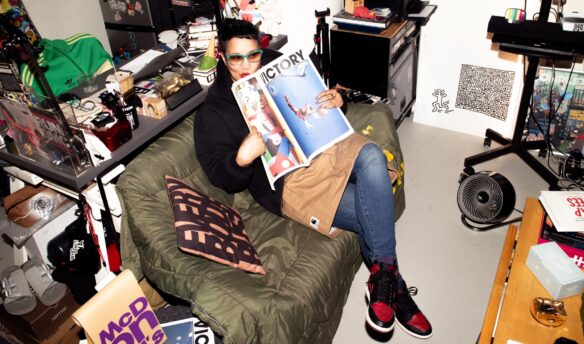[W]hen it comes to espresso, we have Italy to thank, and one Italian in particular: Angelo Moriondo of Turin. Moriondo invented the espresso machine in 1884 in response to the long waits for coffee at his local coffeehouse. Since then, espresso has become a national treasure, a point of pride ranked alongside other Italian inventions like Jacuzzis, pianos, Vespas, and pasta.
But across Italy, people are up in arms about the rising cost of espresso. Once limited to a maximum price of €1, the price over the last few years has increased to €1.10, and even €1.30 in expensive cities like Milan. Italians everywhere are sounding the alarm and even calling the police over it.
If it sounds like we’re poking fun, we are a little. By today’s exchange rates, one euro is about USD 1.07, making Italy’s most expensive espressos roughly $1.39, a meager price compared to most US coffee shops. But as Lonely Planet noted, “Seven or eight espressos a day isn’t unheard of” for many Italians. A price increase of 30% compounded that many times a day, seven days a week, adds up to a big financial hit.
A bigger question might be: How has Italy, the mother of espresso, kept the price stagnant over time? It’s no coincidence: here’s how they did it.
How Italy Kept Espresso to One Euro This Long
Shockingly, espresso still cost only €1 as late as 2020. The price of espresso has been capped since Italy switched from the Italian lira to the Euro currency system in 1999. The costs of necessities—espresso is considered a necessity—are firmly regulated by the Italian government and have been since at least 1915. Beyond that, several factors allowed espresso to remain this inexpensive for so long.

Unlike the specialty standard of the double shot, in Italy, espresso is traditionally served as a single shot. Roast profiles tend to get darker the further south in Italy one goes, which means retailers can use less coffee per shot of espresso—around 7 grams a shot—to achieve the bitter flavors Italians prefer, keeping the cost-per-shot down. The coffee beans in the hopper are also often a mix of robusta and arabica, a blend deliberately adopted in part to help keep prices down but caffeine levels high. Robusta bought on the C-market is currently $2.27/kilogram, as opposed to arabica, which is priced at $5.74/kilogram.
Those are some cost-cutting solutions, but even with those in mind, €1 isn’t enough to cover all of an espresso bar’s costs. In most other countries, the price paid for a coffee covers the whole experience: Service, drink, seating. This is not quite the case in Italy. One euro covers the espresso, which the most experienced Italian drinkers consume in three quick sips while standing, then leave. If you want to sit, that’s usually extra—and frowned upon. One simply does not sit while drinking espresso in Italy. Drinking an espresso together at a bar in Rome can be a social activity, but it’s not meant to be long.
Restaurants, including some espresso bars, have adopted the coperto, an extra fee that can be added to a tab when guests sit. The word is Italian for ‘covered’ and refers to covering the costs of table linens, dishes, flatware, and more. In the US, these costs are built into the price of the coffee (and retail items); in Italy, they can’t be. It’s usually a small amount, maybe a single euro or two, but still potentially startling for tourists to receive a check with a mysterious coperto they didn’t (knowingly) order.
Why The Price Is Going Up Now
It’s partially due to supply chain issues spurred on by droughts and COVID. Italy imports all their green coffee. Brazil, Vietnam, and India accounted for 64% of Italy’s total coffee imports as of 2018, with Uganda, Indonesia, and Honduras holding smaller but significant market shares. Shipping anything over those distances has proven to be more precarious and expensive since the beginning of COVID.
It is also a story of businesses realizing this mandatory price isn’t feasible anymore.
Francesco Sanapo, three-time Italian Barista Champion and owner of Ditta Artigianale, a specialty coffee company in Florence, was fined last month after a customer called the police over a €2 shot of espresso. The fine is due to the price not being displayed on a physical menu, but the customer’s anger seems to be about the price itself. As Sanapo said in his Instagram post (translated from the original Italian), “a person is upset if he pays two euros for [an espresso] from a Mexican plantation prepared with great professionalism,” highlighting the central crux of the problem: €1 doesn’t cover costs anymore.
As Perfect Daily Grind broke down, the share of income going toward roasters and farmers remains low in this world of €1 espresso: “Further along the supply chain, [Italian] roasters earn €0.18 a cup, while producers make just €0.02 on average,” the article states. Clearly, this price is unsustainable, and many in the industry are looking to change it.
In another Instagram caption, translated from Italian, Sanapo said, “I am here to fight as long as the right value is given, I am here for an entire industry and for the future of the Italian coffee industry and hospitality. I’m here to make sure that no one gets scandalized if they pay two euros for an espresso. It is a mission and I will carry it out with my head held high.”
Will Italians come around to more fair pricing structures? Or will coffee shops have to come up with another fee on top of the coperto to keep serving espresso in Italy a financially feasible dream? Only Italians can decide that.
Valorie Clark is a writer and historian based in Los Angeles. She often writes about coffee, travel, social history, and the intersection of all three. When she’s not writing, she’s probably bending to her cat’s every whim.
















